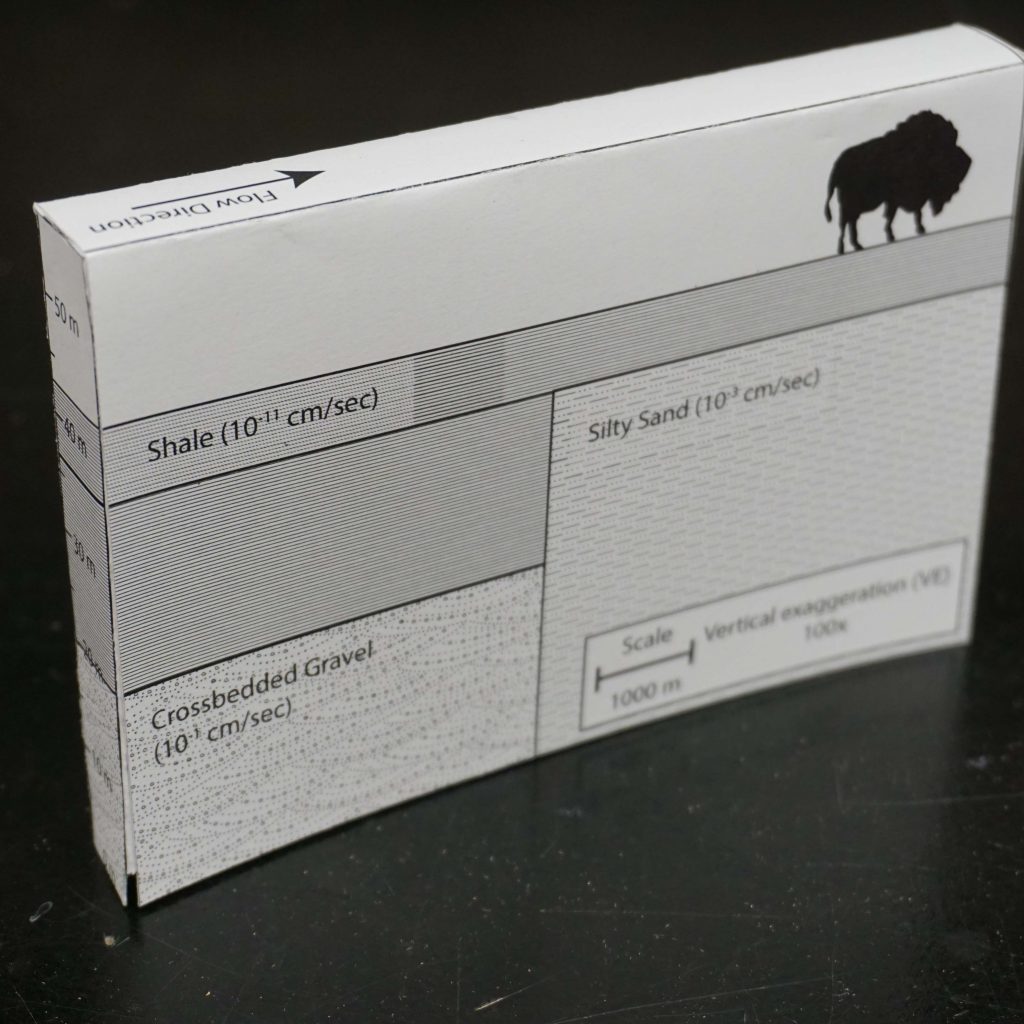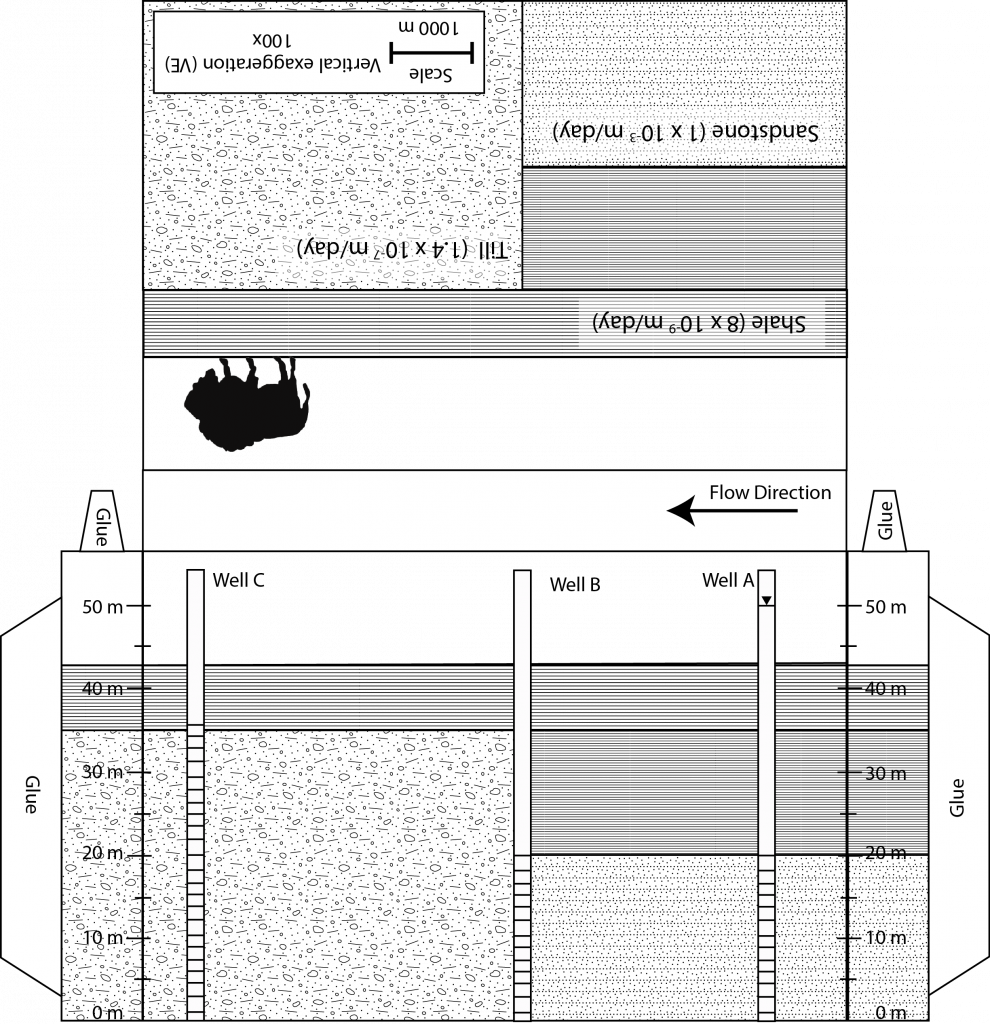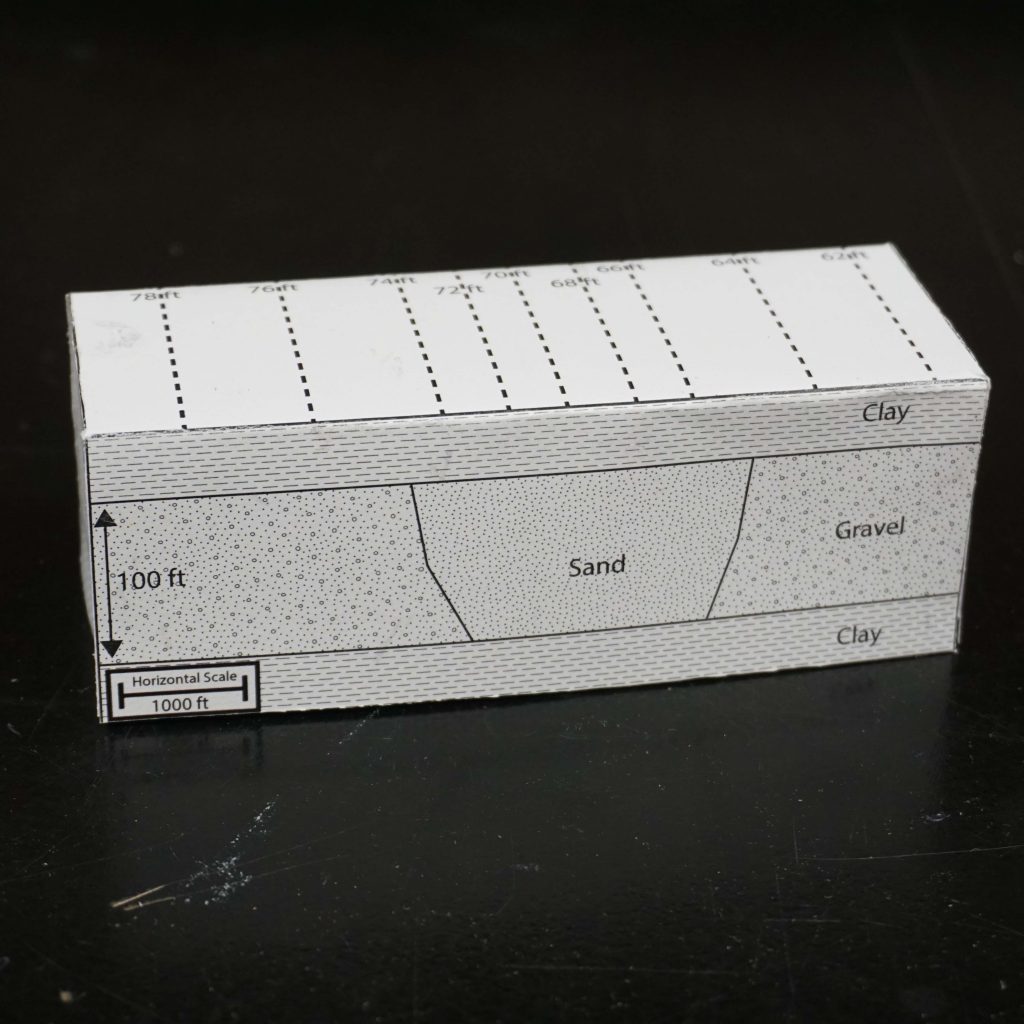This following is an updated model that is a bit of an easier problem for students. The original model made students estimate thickness of the aquifer and you had to change units from cm/sec to m/day. It also had such high conductivity aquifer units that the water table was basically flat. If you want to really challenge students try the other version. However, if you want to easy students into the concepts of Darcy’s law and how to rearrange the equation try this version.

Objectives: Determine the hydraulic head across an aquifer system with two distinct hydraulic conductivities.
1. As water flow from one aquifer to another aquifer with differing hydraulic conductivities there must be a change in hydraulic head or a change in discharge. In the problem below, we are going to assume that water flow from Well A to Well C, through a two-aquifer system. Both aquifers are confined by an upper shale unit and the discharge (Q) through the aquifers is 0.02 m3/day. Using the foldable aquifer model address the following problems.
A. Determine the hydraulic head in Well B.
B. Determine the hydraulic head in Well C.
C. Identify if the aquifer at Well C is confined or unconfined based on the water level in the well.




